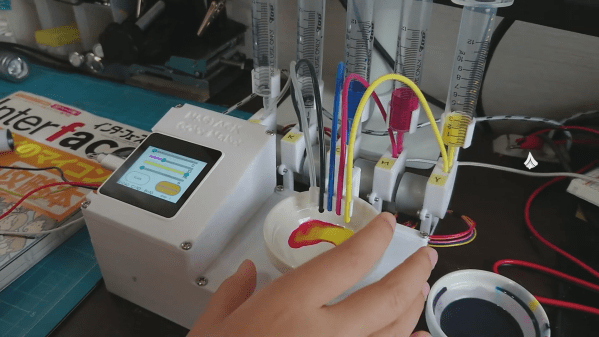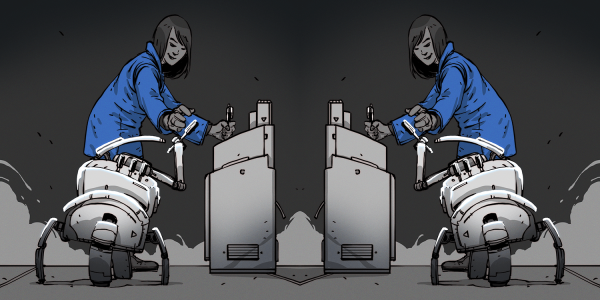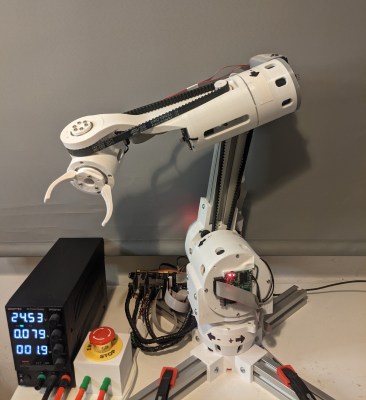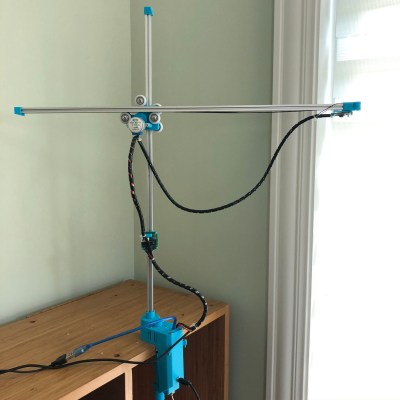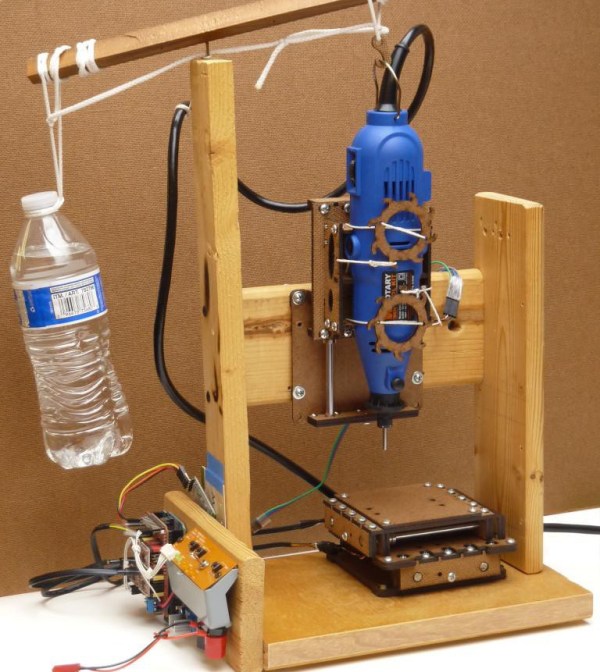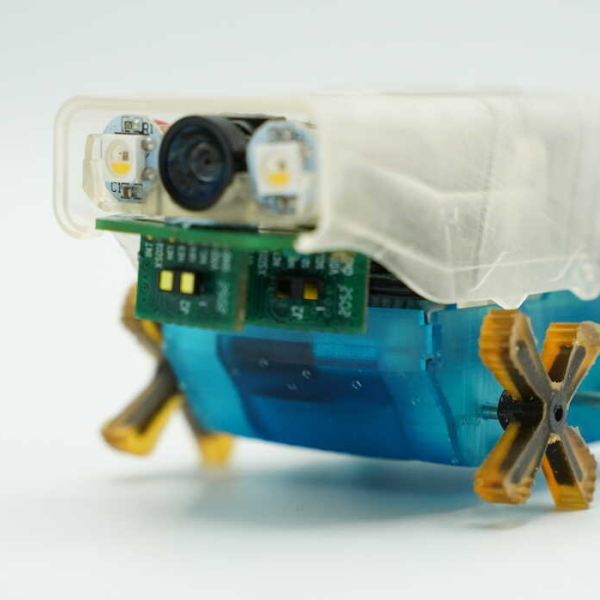We’ve all learned in primary school art classes that blue and yellow make green, and that adding a little black to a color will make it darker. But what if you want to paint with a color that exactly matches something else? Usually, that requires a lot of trial and error (and paint), and the end result may not look the way you wanted after all.
To help aspiring artists, [Airpocket] made the M5Stack Color Maker. This is a device that reads out a color sensor and automatically mixes watercolor paint in the right proportions to match what it sensed. It dispenses drops of cyan, magenta, yellow and black paint (CMYK) into a small bowl, from which you can then apply it with a paintbrush.
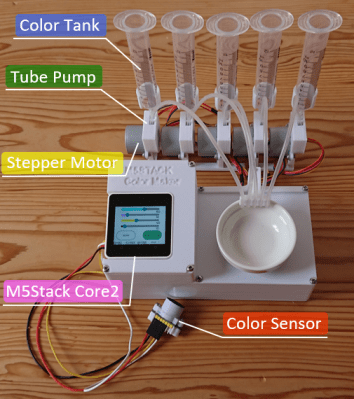 The color sensor is similar in use to the color picker (or “dropper”) tool present in most graphics programs: simply point it at something that has the right color, and it will generate the correct values for you. It is based on an AMS TCS34725 color sensor, which is housed in a 3D-printed shell that also includes a white LED. The sensor outputs Red, Green and Blue (RGB) values, which are converted into the corresponding CMYK values by a Raspberry Pi Pico. A touch-sensitive screen allows the user to make adjustments before activating the paint pumps.
The color sensor is similar in use to the color picker (or “dropper”) tool present in most graphics programs: simply point it at something that has the right color, and it will generate the correct values for you. It is based on an AMS TCS34725 color sensor, which is housed in a 3D-printed shell that also includes a white LED. The sensor outputs Red, Green and Blue (RGB) values, which are converted into the corresponding CMYK values by a Raspberry Pi Pico. A touch-sensitive screen allows the user to make adjustments before activating the paint pumps.
Those pumps are tube pumps, which have been specifically designed (and also 3D printed) to allow them to move tiny amounts of liquid while minimizing the pulsing motion typical with this type of pump. They are driven by stepper motors which are controlled by the Pi Pico.
Although many artists might prefer to mix their colors manually, the M5Stack makes mixing that exact shade of blue just that little bit easier. We can also imagine it might help those who are color blind and unable to clearly tell different colors apart. We’ve seen simple paint mixers for larger quantities of paint, and even robots that can do the actual painting for you. If you need a refresher on color theory, we’ve got you covered too.
Continue reading “The M5Stack Color Maker Can Mix Paint To Match Your Subject”

